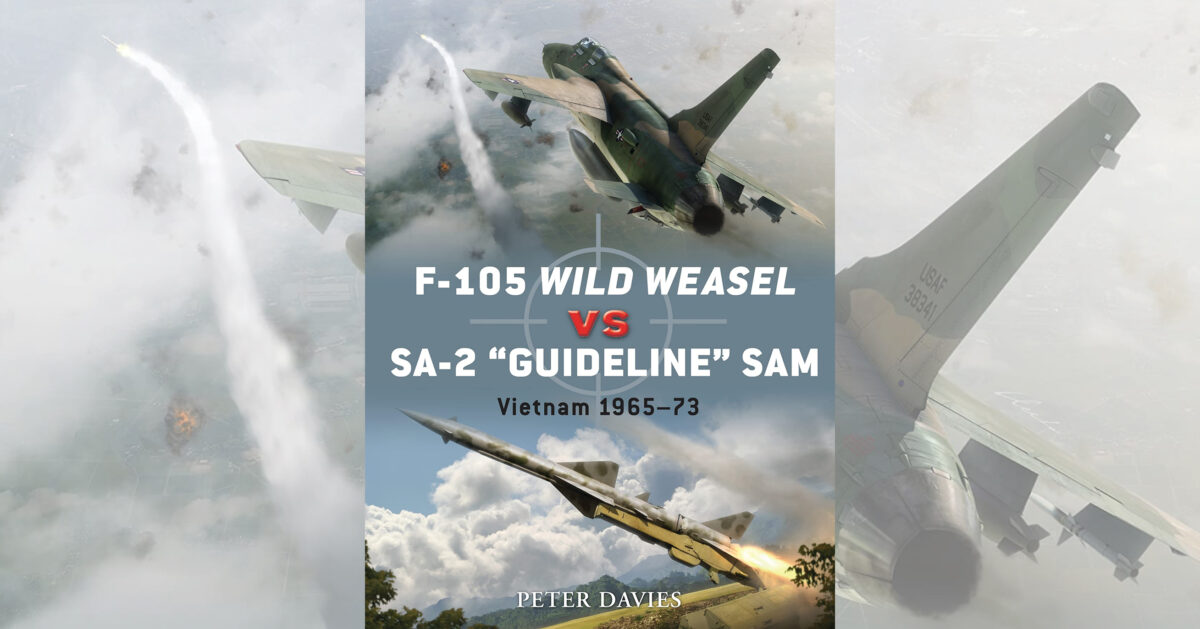F-105 Wild Weasel vs SA-2 SAM, by Peter Davies, Osprey Publishing, 2011
Conceived in 1953 by Pyotr Grushin’s design team, the S-75 surface-to-air missile—known as the SA-2 “Guideline” to its American opponents—was meant to defend the Soviet Union from strategic bombers. It was destined to shoot down a variety of other, more agile aircraft in defense of North Vietnam before finally destroying its first Boeing B-52 bomber in December 1972.
Meanwhile, in the United States, Alexander Kartveli, an expatriate from Josef Stalin’s Georgian hometown of Tblisi, was designing a supersonic nuclear bomber for Republic Aviation. As the F-105D Thunderchief, Kartveli’s brainchild would be a mainstay of the conventional bombing of North Vietnam and initially the SA-2 SAM’s chief prey. Redesigned as a two-seater with electronic gear and radar-guided air-to-ground missiles, however, the F-105F “Wild Weasel” variant would become the Guideline’s most potent nemesis.
British jet age expert Peter Davies combines the latest information declassified from both sides, including firsthand operators’ accounts, to describe the first war fought between airplane and surface-to-air missile in the 35th of Osprey’s “Duel” series, F-105 Wild Weasel vs SA-2 “Guideline” SAM. On one hand, the reader discovers the training process whereby Soviet advisers phased in the quick-learning but xenophobic and sometimes contrary North Vietnamese to take over operation of the missiles and their radar guidance systems. On the other, he learns the techniques by which the Wild Weasels attempted to locate and take out the SAM sites or, more critically, their radars—or at least compel the latter to shut down for a long enough time to limit their effectiveness against the main airstrike.
For the North Vietnamese working in their cramped mobile radar stations, this became a cat and mouse game involving manual missile guidance punctuated by judiciously chosen, brief moments of radar use, in which a wrong decision could bring disaster on their heads. For the Weasel crews, it was a similar case of trying to outthink their counterparts, with the techniques undergoing constant change—with the added hazards presented by the other components of North Vietnam’s triad defense, MiGs and anti-aircraft artillery, which took their toll on the two-seat “Thuds.”
F-105 Wild Weasel vs SA-2 “Guideline” SAM makes an unusual but fascinating “Duel” subject that should appeal to more than just Vietnam veterans. The electronic conflict pioneered by these antagonists laid the groundwork for a new form of air-ground warfare that is still going on—and evolving—today.
This review was originally published in the August 2011 issue of Vietnam magazine. Subscribe here!





